Create like nobody is watching
So often “creative people” speak of their inability to make works of “art”, and attribute it to a block of sorts. It is true that there are ebbs and flows in one’s ability to be productive. Our level of engagement in our practice is always a reflection of our current setting and circumstance. Over the past year much of the globe has been in lockdown or self-imposed quarantine due to outbreaks in communities and countries.
The level of anxiety in this current state can have a direct correlation in our overall sense of purpose. The general malaise can at times be crippling to the point that it even effects everyday simple tasks.
But what if we are living in somewhat prosperous times and society in general isn’t this state of the unknown? What if you believe that all is good in your world, and that for the most part you are content, but are still struggling to create?
The first thing one must ask is what is the purpose of your pursuit of your creative endeavours? Being creative in many ways is a solitary pursuit and in some respects a bit self indulgent. But the need to create is compelling and in many ways may define you.
Between the adrenaline and the satisfaction of a resolved work and the recognition that comes from your efforts we find strength to push forward.
However, looking at the other side of the coin we could encounter a lack of reception to the work, both in social media platforms and in gallery exhibitions. This also can at times play into the sense of the “block”.
The artist block is not a factor for those that casually make art when they just feel the urge. Although it is important to express one’s self, and it can be enjoyable, I would suggest the casual urge to make is relegated to the hobbyist. That is quite different then someone who has invested a considerable amount of time and effort to the discipline, who has actively been trying to refine both their vision and skill sets and chasing a dream.
I think sometimes the block is based on thinking that everything must be somehow unique and different, somehow it is “cutting edge” or it is pointless to make. It is difficult to be creative all the time, we can not always be on, but we need to be on more often then off.
If we focused on the authentic self and what is most important to us, then the work can come, even in difficult times. So much of our experiences are universal and those observations and moments are shared by so many. The universality of lived experiences and observations does not dimmish the importance of your voice. In fact, it legitimises the act.
Sometimes the act of just putting marks down in a subconscious way can unlock our creativity. Remember a writer needs to write everyday a musician must pick up their instrument, it is no different. Determination and desire are what drives us, and although we can’t always be running on high octane we can at least continue to try and move forward and be open to where our creativity can take us.
Create like nobody is watching, turn inward and focus on what your genuine concerns are, recognize how potentially everything in our world is shaping how we carry ourselves, and how we project our observations and concerns because we found value in them.
A final thought on the artistic block.
People offer strategies of how to overcome a ‘block”, they speak of strategies like creating a workstation in advance, laying out all the equipment or tools to create. Whether that be paints, pencils etc., having the materials at your disposal in advance, reduces strains to create when the “moment is right”. I would be curious to know how you deal with your blocks.

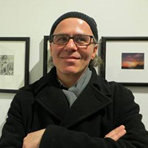

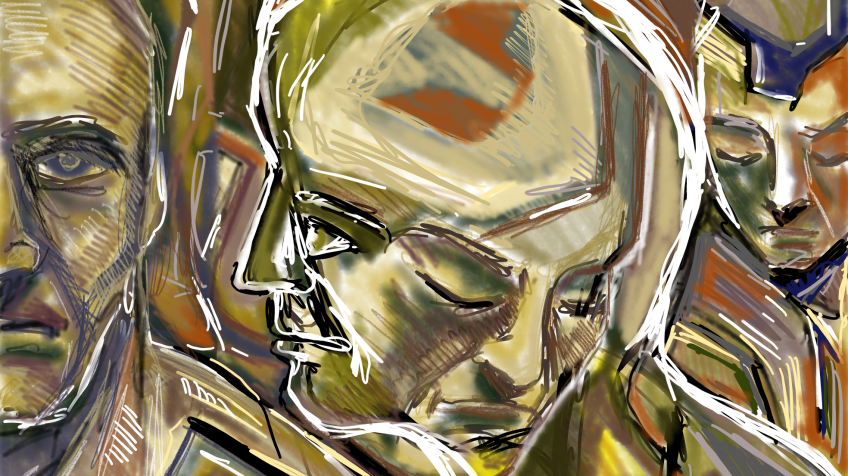
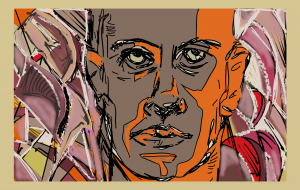
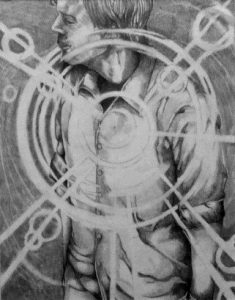 Quite some time ago I took to the task of
Quite some time ago I took to the task of 
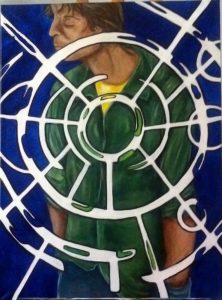
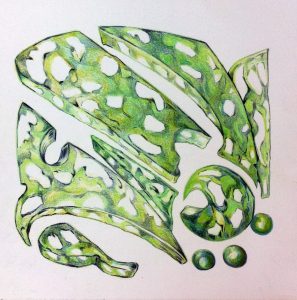 All works must adhere to the dimensions of 12”X12”. This is one of their most popular shows of the year, and definitely a crowd-pleaser. The gallery is transformed into a salon style exhibition space, that this year has over 500 pieces gracing the gallery walls.
All works must adhere to the dimensions of 12”X12”. This is one of their most popular shows of the year, and definitely a crowd-pleaser. The gallery is transformed into a salon style exhibition space, that this year has over 500 pieces gracing the gallery walls.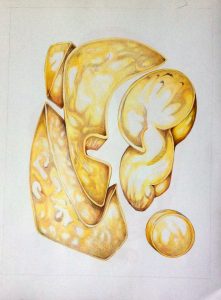 moment in my creative life. I could make marks for the sake of just drawing, however soon the figure emerged once again and the narratives began to flow back into my work. At times I feel that I am wrestling with two distinctly different paths. Yet this transition has nothing to do with reinventing myself or looking for what might be commercially viable. I create works as an extension of myself and my concerns.
moment in my creative life. I could make marks for the sake of just drawing, however soon the figure emerged once again and the narratives began to flow back into my work. At times I feel that I am wrestling with two distinctly different paths. Yet this transition has nothing to do with reinventing myself or looking for what might be commercially viable. I create works as an extension of myself and my concerns.